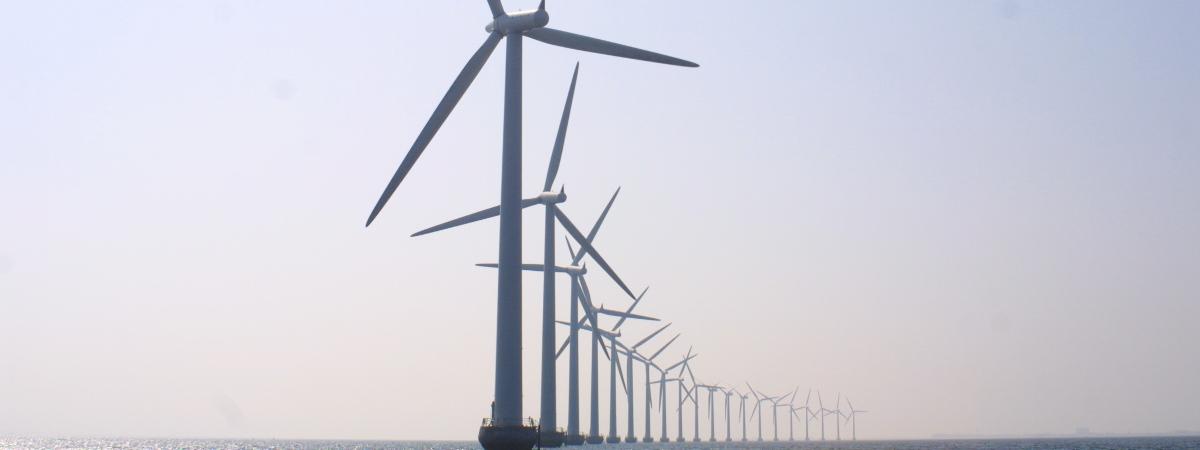by Urszula Papajak
Middelgrunden is probably the most frequently photographed offshore wind farm – 20 turbines situated just 2km outside of Copenhagen, each of 2 MW capacity, rising to 102 meters above the water line, placed side by side in a slightly arched line. It is co-owned by the state-owned utility DONG Energy and the Middelgrunden Turbine Co-operative.
Erik Christiansen, chairman of the Middelgrunden cooperative, explains how working closely with the local authorities was key to the project’s success.

How did it start?
“The cooperative was started by a small group of unemployed engineers” explains Erik Christiansen. “We had a very visionary Energy Minister and Mayor for the environment at that time, who thought that our cooperative could be a good showcase for future projects. That’s how, in March 1997, we established the first offshore wind farm cooperative”.
Shaping the policy
“We worked very closely with public authorities and received a lot of support. Without their help, I don’t think we would have ever been able to negotiate with the utility company” says Christiansen. “The company was very skeptical at the beginning, they said: “they are normal citizens and they don’t have a clue about energy””.
Since the beginning, the government has kept an eager eye on this pioneering project. It recognised the potential of citizens’ participation in the generation of electricity from renewable energy sources and has been experimenting with different support tools since.
“When we were starting, there wasn’t much support whatsoever“ says Christiansen. “That has changed over the years”.
In order to assist local authorities with an often complicated and prolonged wind turbine installation planning process, a Wind Turbine Task Force was established in 2008. Its aim is to increase support for new wind turbines and help citizens to establish new wind cooperatives.

In response to a public demand for more transparency and access to information, all available governmental information about wind energy in Denmark has been gathered and published as a website: www.vindfo.dk. This way, citizens, local authorities, and wind project developers have easy access to information.
Furthermore, new legislation that offers new wind turbine cooperatives low-interest loans for the preliminary investigations, planning, etc was established. For those that fail the implementation stage, the loan does not have to be paid back!
To restore and maintain public acceptance for new projects, the Danish government also enacted a regulatory measure obligating developers of new wind turbines to offer at least 20% of the ownership to local people living within a radius of 4.5km of the turbine.
“I know some utility companies” adds Christiansen “who offer an even higher percentage to residents because they want to avoid local resistance towards the project. Some even give loans to wind cooperatives and residents”.
Advice for anyone wanting to start their own project?
“If I could advise anyone wishing to start their own renewable energy cooperative, I think I would probably say: work closely with local authorities, be patient and persistent” concludes Christiansen.
Interested in the topic?
Read: The story of the first Spanish renewable energy cooperative